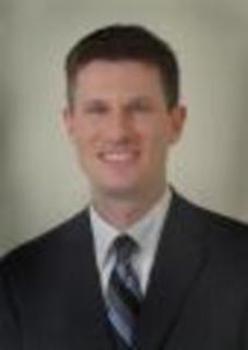Background
In research that was conducted by Sanger, Hux, and Griess (1995), one-third of the school-based speech language pathologists (SLP) surveyed were found to provide pullout speech language services as the only service delivery option for students with communication impairments. More than a decade later, pullout services remain the predominant service delivery model that is used across the United States (ASHA, 2010). What is the reason for this long standing preference for pullout only service delivery models?
Unfortunately, the reason for this preference is not fully understood. Research has identified several administrative barriers and challenges that are believed to be associated with service delivery choices (ASHA, 2010). Large caseloads, excessive workload duties (e.g., paperwork, bus duty), limited planning and collaboration time with teachers, and misperceptions about treatment intensity appear to have the potential to limit service delivery choices and prevent services from being delivered in the least restrictive environment (ASHA, 2010; ASHA, 2002; Roberts, Prizant, & McWilliams, 1995). Clinicians in the field have also encountered teacher and parent resistance and uncertainty about what to do in the classroom to improve communication skills. Despite these barriers and challenges, SLPs are continually being called upon to reassess the appropriateness of traditional pullout only programs and employ alternative approaches in an inclusive setting. SLPs cannot implement this move away from pullout only models alone. Building-level and district administrators must play an important role in creating and maintaining the systemic change necessary to ensure that appropriate service delivery models are used for students who require speech language services (Achilles, Yates, & Freese, 1991; Beck & Dennis, 1997; Cooper, 1991; Ferguson, 1991; Larson, McKinley, & Boley, 1993; Miller, 1989; Moore-Brown, 1991; Schetz & Billingsley, 1992; Throneburg, Calvert, Sturm, Paramboukas, & Paul, 2000).
Service Delivery Models
The American Speech Language Hearing Association (ASHA) considers service delivery to be a dynamic concept, and recommends that it change as the student moves through the various stages of therapy (1999). As the student progresses in speech language therapy across time, the service delivery model should be reevaluated and modified to address the unique and changing needs of the student. The “one size fits all” approach to service delivery is not appropriate; therefore, school-based SLPs need to be provided the skills, structure, and support to design and implement a continuum of services to effectively serve students on their caseload in the least restrictive environment (ASHA, 1999). There are several service delivery models that can be used in the schools to provide educationally relevant services to students with communication impairments.
The first example, pullout speech language therapy, occurs whenever the SLP works independently and provides small-group or individual services in a setting that is separate from the student’s classroom (e.g., speech therapy room, hallway, etc.). It is important to note that the goals of pullout services do not necessarily coincide with the academic content standards that are established by states (Norris, 1989). These services occur apart from the classroom, teacher, curriculum, and nondisabled peers, and they are often times disconnected from the student’s regular daily activities (e.g., lunch, recess, transitions, etc.). Services in the pullout therapy room can be made more educationally relevant when intervention is provided on those language underpinnings that negatively impact the student’s progress in the general education curriculum or setting (Ehren, 2000). Materials, textbooks, and concepts from the classroom can also be used in the pullout therapy room in order to improve communication goals. In the beginning stages of therapy, nondisabled peer volunteers can also be invited during lunch, recess, or afterschool to participate in social skill lessons. Despite these efforts to infuse the curriculum and nondisabled peers into pullout therapy, a consistent criticism remains. Pullout therapy alone does not promote skill carryover or generalization (Bellini, Peters, Benner, & Hopf, 2007; Elksnin, & Capilouto, 1994; Finn, 2003; Miller, 1989). Speech language services in a therapy room cannot effectively replicate the interactions and activities commonly found in the classroom, which may in turn adversely affect the carryover and generalization of newly learned skills. Speech language services become “decontextualized,” and the student struggles to make connections between what goes on in the therapy room and what needs to occur throughout the rest of the school day (Miller, 1989). Pullout therapy is not the only service delivery option available to SLPs.
The second service delivery model that is employed infuses services into the classroom setting and is known by many names. It can be called inclusion or integrated classroom-based, curriculum-based, or classroom-based services, and this model directly impacts upon the student’s academic and functional performance across educational settings (ASHA, 1999). The SLP provides direct services in the classroom through either co-teaching with the educational staff or leading large or small-group lessons. The SLP works with the classroom teacher or aide to select communication skills or strategies that not only benefit the student with the communication impairment but also the rest of the class. The SLP works with the classroom personnel to infuse these strategies or skills into ongoing classroom instruction so that they are carried over throughout the school day and after the SLP leaves the classroom. The SLPs models for the teachers and aides the use of the strategy or skill in hopes that the teaching staff will infuse these into classroom instruction. Services of this type are better able to ensure a carryover and generalization of newly learned skills across educational settings and communication partners (Bellini et al., 2007; Throneburg et at., 2000; Wilcox, Kouri, & Caswell, 1991). “The goal of introducing alternative models of service delivery [is] not to eliminate pullout services; rather, the goal [is] restriction of the use of pullout services to appropriate cases and the provision of alternative approaches when they best serve students’ needs” (Sanger et al., 1995, p. 80).

